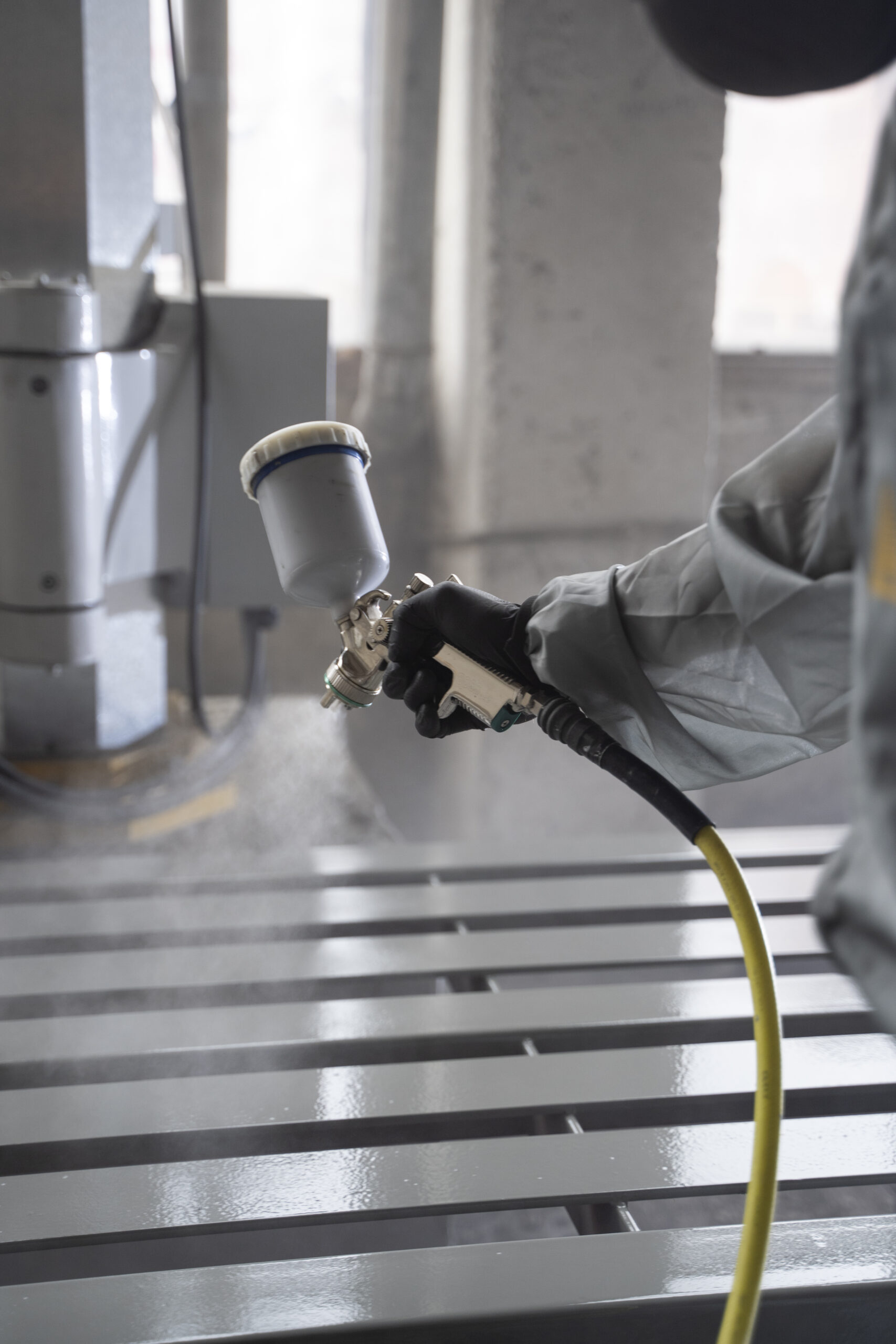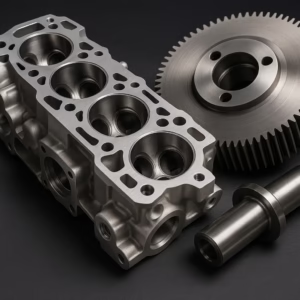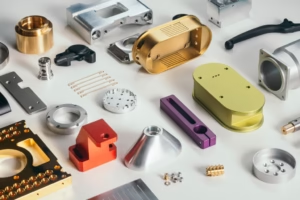
What is Wax Casting
Wax casting is a crucial manufacturing process that involves transforming sheet metal into desired shapes through plastic deformation. This technique is widely used in various industries due to its efficiency and ability to produce high-quality parts. In this post, you will explore the principles of deep drawing, the materials commonly used, and the surface treatments that enhance the final products.
How wax casting works?

1.Creating the Wax Model
The first step in wax casting is the creation of a wax model, which is an exact replica of the final metal part.
- Wax Injection Molding: Wax is injected into a metal mold to form the wax model. This method ensures high precision and repeatability for producing multiple copies of the same part.
- Hand Carving: For unique or custom pieces, the wax model can be hand-carved by skilled artisans. This allows for intricate details and personalized designs.
- 3D Printing: Modern techniques include the use of 3D printers to create wax models directly from digital designs, enabling complex geometries that are difficult to achieve with traditional methods.
2. Creating the Ceramic Shell
Once the wax model is completed, it needs to be encased in a ceramic shell to form a mold for the metal casting.
- Dipping in Ceramic Slurry: The wax model is repeatedly dipped in a ceramic slurry, which is a mixture of fine silica or other refractory materials and a liquid binder. After each dip, the model is coated with fine sand or stucco to build up the shell thickness.
- Drying: Each layer must be thoroughly dried before the next layer is applied. This process is repeated multiple times until a thick, strong shell is formed. The number of layers depends on the size and complexity of the part.
- Building the Gating System: A network of wax rods, called gates and sprues, is attached to the wax model. These rods will eventually become channels for the molten metal to flow into the mold.
3. Dewaxing and Firing
After the ceramic shell is built up around the wax model, the next step is to remove the wax and strengthen the ceramic mold.
- Dewaxing: The entire assembly is heated in an autoclave or furnace to melt and drain out the wax. This leaves a hollow ceramic shell, which accurately captures the details of the wax model.
- Firing the Shell: The ceramic shell is then fired at a high temperature in a kiln. This step hardens the shell and burns out any remaining wax residues, making the mold capable of withstanding the high temperatures of molten metal.
4. Metal Pouring
With the ceramic mold prepared, it’s time to pour the molten metal.
- Preheating the Mold: The ceramic shell is preheated to a specific temperature to reduce thermal shock and ensure a smooth metal flow.
- Melting the Metal: The chosen metal alloy is melted in a furnace. The temperature and atmosphere inside the furnace are carefully controlled to maintain the quality and properties of the molten metal.
- Pouring the Metal: The molten metal is poured into the preheated ceramic mold through the gating system. Gravity, vacuum, or centrifugal force can be used to help the metal fill the mold completely and evenly. =
5. Cooling and Shell Removal
After the metal has been poured, it needs to cool and solidify before the final part can be revealed.
- Cooling: The filled mold is allowed to cool at a controlled rate to prevent defects such as cracks or distortions. The cooling time depends on the size and complexity of the casting as well as the type of metal used.
- Breaking the Mold: Once the metal has fully solidified and cooled, the ceramic shell is carefully broken away. This is typically done using mechanical methods or high-pressure water jets.
- Cutting and Finishing: The metal casting is separated from the gating system, and any excess material is removed. The part is then cleaned, inspected, and subjected to any necessary finishing processes to achieve the desired surface quality and dimensions.
Metal Material for Wax Casting
Selecting the right metal for wax casting depends on the specific requirements of the final product. Factors such as strength, corrosion resistance, weight, and application environment play a crucial role in determining the best material.
sustainable metal materials for silicone casting

Stainless steel is widely used in wax casting for its excellent corrosion resistance, strength, and aesthetic appeal.
Grades: Common grades include 304, 316, and 17-4 PH.
- 304: Known for its excellent corrosion resistance and formability, suitable for a wide range of applications.
- 316: Contains molybdenum, which enhances corrosion resistance, especially against chlorides and industrial solvents.
- 17-4 PH: A precipitation-hardening grade that offers high strength and good corrosion resistance, often used in aerospace and high-stress applications.
Applications: Industrial components, medical instruments, marine hardware, and kitchenware.
Carbon steel is favored for its strength and hardness, making it suitable for mechanical and structural applications.
Grades: Common grades include 1018, 1045, and A36.
- 1018: A low-carbon steel with good ductility and toughness, often used for machinery parts.
- 1045: A medium-carbon steel with higher strength and hardness, used for gears, shafts, and axles.
- A36: A common structural steel grade, used for construction and heavy machinery components.
Applications: Machinery parts, automotive components, construction equipment, and structural parts.
Aluminum is valued in wax casting for its lightweight, excellent corrosion resistance, and good thermal and electrical conductivity.
Grades: Common grades include 356, 6061, and A356.
- 356: Known for good castability, mechanical properties, and corrosion resistance, often used in automotive and aerospace parts.
- 6061: A versatile alloy with good mechanical properties and weldability, used for structural applications.
- A356: A variation of 356 with improved mechanical properties, often used in high-performance applications.
Applications: Aerospace components, automotive parts, consumer electronics, and lightweight structural components.
Bronze alloys are known for their excellent wear resistance, corrosion resistance, and attractive appearance.
- Grades: Common grades include C932 (bearing bronze), C954 (aluminum bronze), and C955 (nickel-aluminum bronze).
- C932 (Bearing Bronze): Known for its good wear resistance and machinability, used in bearings, bushings, and thrust washers.
- C954 (Aluminum Bronze): Offers high strength and excellent corrosion resistance, used in heavy-duty industrial applications.
- C955 (Nickel-Aluminum Bronze): Provides superior strength and resistance to corrosion, especially in marine environments.
Applications: Bearings, bushings, gears, marine hardware, and decorative items.
Brass is appreciated for its machinability, corrosion resistance, and aesthetic qualities, making it suitable for both functional and decorative purposes.
Grades: Common grades include C260 (cartridge brass), C360 (free-machining brass), and C464 (naval brass).
- C260 (Cartridge Brass): Known for its excellent ductility and corrosion resistance, used in ammunition casings and musical instruments.
- C360 (Free-Machining Brass): Offers excellent machinability and is commonly used in precision parts and fittings.
- C464 (Naval Brass): Contains a small amount of tin for enhanced corrosion resistance, especially in seawater environments.
Applications: Plumbing fixtures, decorative hardware, musical instruments, and precision machined parts.
Titanium is prized for its high strength-to-weight ratio, excellent corrosion resistance, and biocompatibility.
Grades: Common grades include Grade 2 (commercially pure titanium) and Grade 5 (Ti-6Al-4V).
- Grade 2: Known for its excellent corrosion resistance and ductility, used in chemical processing and medical implants.
- Grade 5 (Ti-6Al-4V): The most widely used titanium alloy, offering high strength, lightweight, and good corrosion resistance, used in aerospace, medical, and high-performance applications.
Applications: Aerospace components, medical implants, sports equipment, and chemical processing equipment.
Wax Casting Finishes
The finishing process in wax casting is critical to achieving the desired surface quality, appearance, and performance of the final product. Various finishing techniques are employed to enhance the surface properties, remove imperfections, and prepare the castings for their intended applications. Here’s an in-depth look at the different types of finishes used in wax casting:

1. Initial Cleaning and Surface Preparation
Before applying any finishing techniques, the cast part must undergo initial cleaning and surface preparation:
- Shell Removal: The ceramic shell is broken away from the metal casting, usually using mechanical methods or high-pressure water jets.
- Degating and Despruing: The excess material from the gating system is removed, typically using saws, grinding wheels, or cutting torches.
- Surface Cleaning: The casting is cleaned to remove any remaining ceramic particles, oxides, and other contaminants. Methods include abrasive blasting, chemical cleaning, and ultrasonic cleaning.

2. Grinding and Polishing
Grinding and polishing are mechanical processes that improve the surface finish and dimensional accuracy of the cast parts:
- Grinding: Coarse grinding removes surface irregularities, flashes, and other imperfections. Various grinding tools, such as bench grinders, angle grinders, and belt grinders, are used depending on the part’s size and geometry.
- Polishing: Polishing involves finer abrasives to create a smoother surface. Polishing wheels, buffing pads, and compounds are used to achieve the desired level of smoothness and shine. Polishing can be done in multiple stages, from rough to fine, to achieve a mirror-like finish.

3. Machining
Machining is used to achieve precise dimensions, tolerances, and specific features on the cast parts:
- CNC Machining: Computer Numerical Control (CNC) machines provide high precision and repeatability. CNC milling, turning, and drilling are commonly used to refine critical dimensions and add intricate details.
- Manual Machining: For custom or low-volume parts, manual machining techniques such as lathe work and hand filing may be employed.

4. Chemical Treatments
Chemical treatments enhance the surface properties and appearance of the castings:
- Pickling and Passivation: Acidic solutions remove surface oxides and contaminants, improving the corrosion resistance of metals like stainless steel and titanium.
- Anodizing: An electrochemical process that creates an oxide layer on the surface of aluminum castings, enhancing corrosion resistance and allowing for color finishes.
- Black Oxide Coating: A chemical treatment for steel and iron castings that provides a black finish, enhances corrosion resistance, and reduces glare.

5. Electroplating and Coating
Electroplating and coating processes add a protective or decorative layer to the castings:
- Electroplating: Metals such as chrome, nickel, gold, and silver are deposited onto the surface of the casting through an electrochemical process. This enhances the appearance, corrosion resistance, and wear resistance.
- Powder Coating: A dry powder is electrostatically applied and then cured under heat to form a durable, protective finish. Powder coating offers a wide range of colors and textures.
- Painting: Liquid paints, including epoxy, polyurethane, and acrylic, can be applied to castings to provide color and protection against environmental factors.

6. Heat Treatments
Heat treatments improve the mechanical properties and performance of the castings:
- Annealing: This process involves heating the casting to a specific temperature and then slowly cooling it to relieve internal stresses and improve ductility.
- Quenching and Tempering: Castings are heated and then rapidly cooled (quenched) to increase hardness. They are subsequently reheated (tempered) to achieve the desired balance of hardness and toughness.
- Solution Treating and Aging: Commonly used for aluminum and titanium alloys, this process involves heating the casting to dissolve alloying elements, quenching, and then aging to achieve optimal mechanical properties.

7. Specialized Finishes
Depending on the application, specialized finishes may be required:
- Texturing: Surface texturing techniques such as bead blasting, shot peening, and laser texturing can create specific surface patterns and enhance grip or aesthetic appeal.
- Polishing to Optical Clarity: For applications requiring highly reflective surfaces, such as mirrors or optical components, polishing to optical clarity is achieved through meticulous multi-stage polishing processes.
Advantages and Challenges of Wax Casting
Vantaggi

High Precision and Complexity
Wax casting allows for the creation of highly detailed and complex shapes.

High Surface Quality
The process produces parts with excellent surface finish and minimal defects.

Material Efficiency
Wax casting can be more efficient in terms of material usage compared to other methods.
Challenges

Complex Process
The multiple steps involved in wax casting require meticulous attention to detail.

High Production Costs
The process can be expensive due to the materials and labor involved.

Technical Expertise Required
Skilled technicians are needed to manage the various stages of the process effectively.
Industrial Manufacturing Applications of Wax Casting
Wax casting’s versatility, precision, and ability to produce complex shapes make it an invaluable manufacturing process across various industrial sectors. From aerospace and automotive production, medical device manufacture, power generation, medical device diagnostics, and power grid maintenance; wax casting’s investment casting method ensures high-quality durable components meet each industry’s specific requirements – becoming more important as technology evolves and the demand for precision and performance increases. It remains at the core of modern industrial production.

1. Aerospace Industry
The aerospace industry demands high-performance components with tight tolerances and excellent material properties. Wax casting is particularly suited to meet these stringent requirements.
- Turbine Blades and Vanes: Investment casting is used to produce turbine blades and vanes for jet engines. These components require precise aerodynamic shapes and high-temperature resistance, which are achievable through wax casting.
- Structural Components: Complex structural parts such as brackets, housings, and supports are cast to provide strength while minimizing weight. These parts are often made from advanced alloys like titanium and nickel-based superalloys.
- Fuel System Components: Investment casting produces intricate fuel system parts, including injectors, manifolds, and pumps, ensuring reliable performance and tight tolerances.
- Landing Gear Components: Critical landing gear parts are cast to withstand high loads and repeated stress cycles, using durable and lightweight materials like titanium.

2. Automotive Industry
The automotive sector benefits from wax casting’s ability to create durable and lightweight components with high dimensional accuracy.
- Engine Parts: Components such as pistons, cylinder heads, and exhaust manifolds are cast to withstand high temperatures and pressures while providing precise fit and function.
- Turbocharger Components: Turbine housings and impellers are cast to exact specifications to improve engine efficiency and performance.
- Transmission Parts: Gears, shafts, and housings are produced using investment casting to ensure smooth operation and durability under varying load conditions.
- Suspension Components: Control arms, brackets, and other suspension parts are cast for strength and reliability, contributing to vehicle stability and safety.
- Brake Components: High-performance brake calipers and rotors are cast to achieve optimal strength, heat dissipation, and wear resistance.

3. Industrial Equipment
In the realm of industrial equipment, wax casting provides the versatility and precision needed for producing a wide range of components.
- Pumps and Valves: Investment casting produces complex shapes required for pump housings, impellers, and valve bodies, ensuring tight seals and efficient fluid flow.
- Machinery Parts: Components such as gears, cams, and levers are cast to precise specifications, contributing to the reliable operation of industrial machinery.
- Tooling and Dies: Tooling inserts and die components are cast to provide high hardness and wear resistance, essential for manufacturing operations.
- Mining Equipment: Wear-resistant parts for mining equipment, such as crusher parts and conveyor components, are cast to withstand harsh operating conditions.

4. Medical Devices and Equipment
The medical industry relies on wax casting for producing high-precision components used in various medical devices and equipment.
- Surgical Instruments: Precision surgical tools and instrument components are cast to meet strict hygiene and performance standards, often using stainless steel or titanium.
- Orthopedic Implants: Joint replacement parts, such as hip and knee implants, are cast to ensure biocompatibility, durability, and precise fit.
- Diagnostic Equipment: Components for imaging devices, such as MRI and CT scanners, are cast to achieve the necessary precision and reliability.
- Dental Implants and Instruments: Investment casting is used to produce dental implants, orthodontic brackets, and other dental tools, ensuring high accuracy and strength.

5. Oil and Gas Industry
The oil and gas industry requires robust components that can withstand extreme conditions, making wax casting an ideal manufacturing method.
- Drill Bits and Tools: Investment casting produces durable drill bits, reamers, and other downhole tools that can endure high stress and abrasive conditions.
- Valves and Fittings: Precision-cast valves, flanges, and fittings are essential for maintaining the integrity of pipelines and processing equipment.
- Pump Components: Wax casting is used to create complex pump parts that ensure efficient operation and longevity in harsh environments.
- Pipeline Components: Investment casting produces fittings, connectors, and supports for pipelines, providing strength and reliability under high pressure and corrosive conditions.

6. Power Generation
The power generation industry relies on wax casting for producing components that are critical to the efficiency and reliability of power plants.
- Turbine Components: Blades, vanes, and nozzles for gas and steam turbines are cast to achieve high performance and durability at elevated temperatures.
- Generator Parts: Components such as housings, brackets, and connectors are cast to provide precise fit and reliable operation in power generation equipment.
- Nuclear Plant Components: Investment casting is used to produce parts for nuclear reactors, including control rod components and structural supports, requiring high precision and radiation resistance.

7. Food Processing and Packaging
The food processing and packaging industry benefits from wax casting’s ability to produce hygienic and precise components.
- Processing Equipment: Investment casting produces parts for food processing machines, such as mixers, conveyors, and slicers, ensuring easy cleaning and maintenance.
- Packaging Machinery: Components for packaging machines, including sealing jaws, rollers, and gears, are cast to provide reliable and efficient operation.
- Sanitary Fittings: Wax casting is used to produce sanitary fittings and connectors that meet strict hygiene standards, essential for food and beverage production.

Let's Start Project!
We will give you a quick reply and quote within 12 hours.
- Phone: 0086-18779223927
- Email: Lynnyao@prototekparts.com
- Address: Nanchang,Jiangxi,China
























































